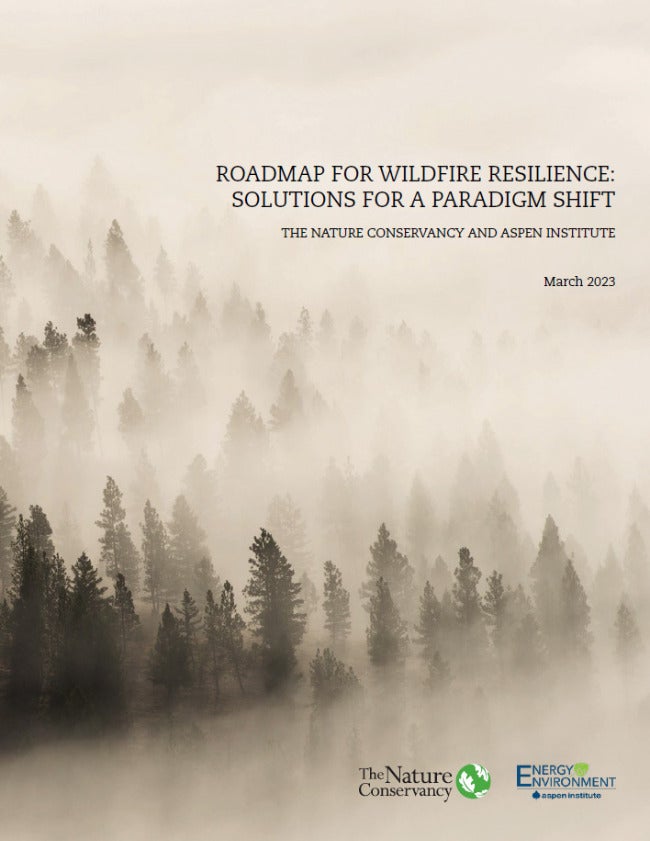Though fire is a natural ecological process in many forest ecosystems, extreme wildfires now pose a growing threat to the nation’s natural resources and communities. These trends will continue to worsen absent bold and transformative policy action to change the trajectory of how we manage and prepare for wildfire impacts.
The Nature Conservancy and the Aspen Institute have spent the last year responding to this opportunity by hosting a series of workshops that sought input from all levels of government, Tribal Nations, the private sector, fire-prone communities, philanthropists, academics and other stakeholders, culminating in a Roadmap for Wildfire Resilience. The Roadmap concentrates on the two pillars of the 2014 National Cohesive Wildland Fire Management Strategy—resilient landscapes and fire-adapted communities—that require an investment commensurate with the third pillar—safe and effective wildfire response—to alter the current wildfire trajectory. This Roadmap weaves together lessons from decades of policy and practice with forward-thinking approaches that incorporate new technology and knowledge.
Decision makers, advocates and other interested readers are invited to use this Roadmap to advance a more strategic and coordinated approach to wildfire resilience in ways that contribute to addressing climate change, promoting ecosystem health, advancing economic recovery and supporting historically underserved and excluded communities.


